Alexandra Wolfe's Blog, page 42
November 19, 2015
Craft & Storytelling
These are, as a writer, never mind an editor, what I consider the five major categories that highlight the important aspects of craft and storytelling.
(1) Professionalism of Writing:
Are the grammar, spelling, and punctuation correct? Is the writing easy to follow and understand? Can you just enjoy the story, or do you stumble over some of the writing choices?
Good things: Variation in sentence structure, vocabulary, and imagery; a sense that the writing is carrying you along through the story.
Bad things: Awkward repetition of words, clunky or confusing sentences.
(2) Setting:
Does the setting of the story feel real to you? Is the world-building convincing? Does the writer use the five senses to describe the world?
Good things: Interesting details worked into the story, a setting that “comes alive,” descriptive phrases staggered throughout the exposition, narrative, or dialogue.
Bad things: Info-dumps about biology, politics, history, or other aspects of the story’s setting; the story coming to a halt to make way for description; characters lecturing each other in an unrealistic way; feeling confused.
(3) Character Development:
Are the characters believable and sympathetic? Are their actions consistent with their personality? Do the characters show change and growth in order to solve their problems?
Good things: Characters seem like real people and act in believable ways; characters reveal themselves by their actions and their words; characters grow or change during the course of the story.
Bad things: Info-dumps about the characters (their personalities, appearance, background history, motivations, etc.) that interrupt or slow down the story; wooden characters; characters whose actions are (and remain) inexplicable or contradictory; characters who don’t grow and change in reaction to the plot.
(4) Plot Credibility:
Does the story hold together and ring true? (This is a gut-feeling thing; you believe, when you’re reading a story, or you don’t.) Does anything pop you out of the experience of the story? Is there a beginning, middle, and end–does it feel complete?
Good things: The story unfolds in a way that makes sense to you–if you are in the dark temporarily, you sense that it’s on purpose, not accidental; the events are believable in the context of the story; the plot has forward momentum–the pace of it keeps you reading to find out what happens next.
Bad things: The story confuses you or makes no sense; the plot twists are so clichéd and familiar that you knew they were coming a mile away; the plot has unnecessary twists or underdeveloped or forgotten threads.
(5) Dialogue:
Does it sound believable? Does it develop the characters or plot? Do the characters have different voices?
Good things: Dialogue that matches the setting of the story, without anachronisms; moderate use of favourite phrases, accents, etc., to help delineate character; knowing who’s doing the talking as you read, even without a lot of dialogue tags.
Bad things: Stiff or boring dialogue; dialogue used as exposition; repetitive dialogue; characters with speaking traits (accents, favourite phrases, etc.) that are unbelievable; use of dialogue as info-dumps.
November 18, 2015
Tree Project – Day 79
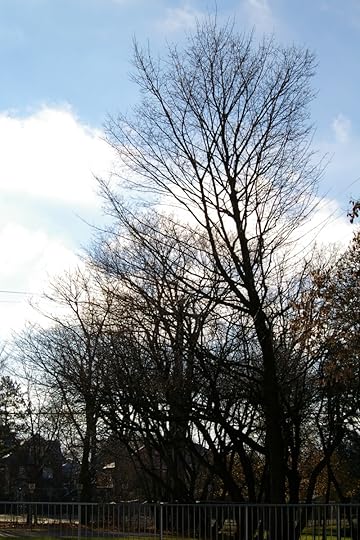
Tree Project – image 79
Another beautiful crisp and clear autumnal day, with just a few soft white clouds to tease an otherwise blue sky. It is, again, in the minus degree temps though, and a tad chilly these days out on the balcony.
The Art of Writing
Here are some of the more important questions you should be asking yourself when constructing your next novel. This advice is pertinent for any type of writing whether a short story, screenplay, or full-length work.
THE SYNOPSIS
This is a thumbnail of your story, what amounts to a brief encapsulation of not only the idea, with all the essential ingredients, like a beginning, a middle and an ending, but also touching on the characters and their motivations/conflicts/goals. This also helps you to focus on the main and salient points of the story and characters.
Familiarize yourself as much as possible with the history of your characters. Live, breath and be on intimate terms with them, daily, as you write. Otherwise the reader will not believe in them. They must be as real as your friends, your family, your neighbours.
THE STRUCTURE
• Always ask yourself questions as to where something/someone is going to see if everything follows through.
• Think story development as well as character development.
• Keep your lead characters active and interesting.
• Don’t make all your characters sound the same – try and diversify! (See: Character Development)
• Details are always important.
• Avoid false jeopardy, contrivance, and convenience.
• If you get your character into difficulty you must also give her the means to get out of it.
• Try and give each chapter a focus and or action, even if it is downbeat.
• Provide your story with moments of emotion and or revelation, especially for the main character – readers want someone they can identify with.
ANCILLARY QUESTIONS
• Is each chapter focused on a ‘plot line’ or are there subplots?
• Who is the work aimed at, if anyone? What age range, social level, educational level, sex?
• Are there any themes or aspects of character growth that occur throughout the course of the work?
PHYSICAL RESTRAINTS
The characters must strive to achieve something, or to avoid something. Obstacles and sabotaging your character helps bring them to life; you have to determine what your character wants, and, how far she’ll go to achieve it. And just as importantly how far someone else will go in trying to stop them.
CONFLICT, EMOTIONS & DESIRES
You don’t just tell a story, you must also drive the story. For it to succeed nothing drives a story better than conflict and emotion. A chapter should be made up of a number of things. So to make them work, just like the novel as a whole, they should have a beginning, a middle and, that all important end. Move the driving forces of your chapter as you would the driving forces of your whole novel. Think, plan, prepare. Then execute. Move one chapter into another leaving the reader hungry for more.
THE QUALITY OF PASSION
Stories should, for the most part, matter to you. Always try to incorporate something that is of particular interest to you into the story line. Fire and intensity can be all the difference between something mediocre and something dynamic.
November 17, 2015
Tree Project – Day 78
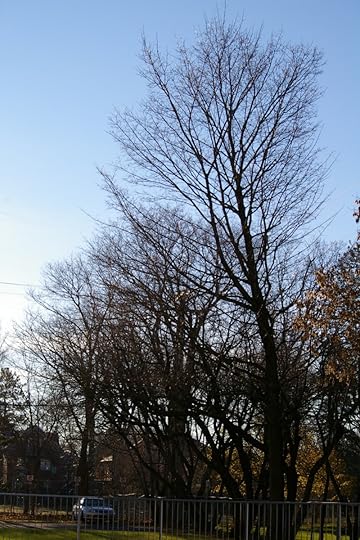
Tree Project – image 78
Clear blue skies, brilliant autumnal sunshine, and crisp, cold still air. One sentence that sums up a usual autumn day here about. Something we’ve been missing since the month started. The minus 5 degrees is the third day in a row. A teaser of things to come.
The Road to Editing
One of the topics of conversation doing the rounds on various blogs, usually asked by first time or emerging writers is, ‘why is editing a book so expensive?’ Usually indicating they are, in all likelihood, going to (a) self-publish and (b) not had their work edited or, at the very least, not edited by a professional.
You should know that a professional editor is someone who will take between (on average) 60-100 hours, and yes, sometimes more, to edit a 100,000 word manuscript. No, it doesn’t come cheap. And here’s why; an editor doesn’t read your book once. They don’t even read it twice or three times. They read it several times. They read it forwards, backwards (if they’re doing their job right) and slowly. It is an extremely time-consuming occupation, and even at its most basic, the editor is reading at a measured pace, taking notes, making suggestions, and appending them either onscreen, or on a printed copy.
It all takes time. And, as everyone knows, time is money.
Each stage of editing takes time: you can go into depth and detail, or simply address just the mechanics of your MS. A copy editor and a proofreader do almost a similar job, and whereas a proofreader is concentrating on consistency, they still have to go over each and every word, each and every page, and each and every chapter, not once, but a number of time. While the copy editor’s task is made all the more complicated by not only doing the above, but checking flow, spelling, grammar, and what can take a sentence from being so-so to better, to great, all the while considering pacing, voice, and storytelling.
Go even deeper, and you are into developmental and structural editing. This is small detail big picture editing, looking at in-depth characterization, pacing, flow, and yes, plotting. It’s nitty-gritty nuts and bolts, fine tooth comb analysis.
If you still want your friend down the road to do the job, after all, she is a teacher. Then you’ll get exactly what you pay for. But if you are serious about your craft and what you write, looking to build a body of work, and, along the way, a reputation, then you have to give serious consideration to having at least one level of editor look through your work before it goes to an agent/editor, or in to print.
NOTE:
Check out what the CMS (Chicago Manual of Style) says about editing. You can also look up freelance professionals on EAC (the Editors’ Association of Canada) or the American equivalent, EFA (the Editorial Freelancers Association) for how long each stage of editing might take, and, on average, how much it might cost.
November 16, 2015
Tree Project – Day 77
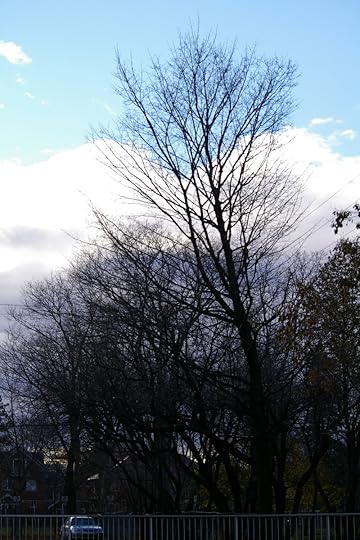
Tree Project – image 77
Cold, brisk with a nipping breeze, with just a few dark clouds moving fast today. They say it will be a cold but clear day, and while they say it’s only 1 degree, it feels more like yesterday, minus 5. At least we are promised some sunshine!
November 15, 2015
Tree Project – Day 76
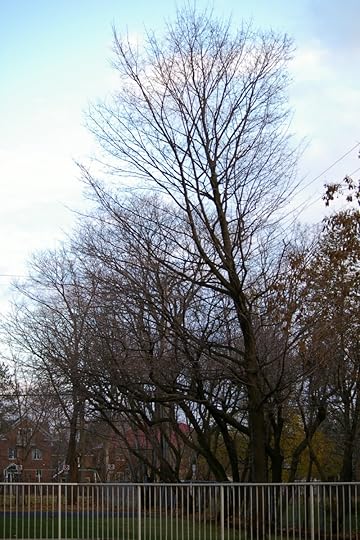
Tree Project – image 76
It’s getting colder, and, with the windchill … yes, we have one of those today, it’s minus 5 this afternoon. Fast moving grey clouds that made it feel and look like we just might get snow. But not today!
November 14, 2015
Tree Project – Day 75
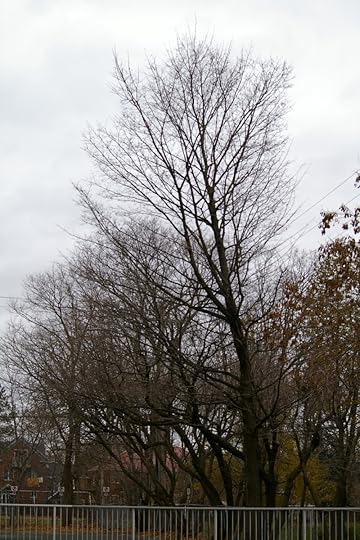
Tree Project – image 75
The skies dawn heavy, dark and overcast, sombre is the mood this morning, a morning after the terrible attacks that took place, last night in Paris. We mourn for the people of Paris. We grieve with them this day. We stand in solidarity with them, among many across the world.
November 13, 2015
Tree Project – Day 74
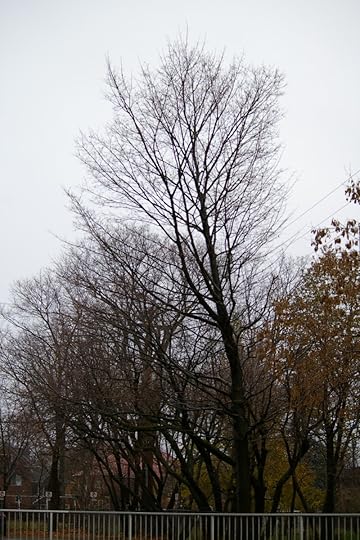
Tree Project – image 74
The wind is blowing, the rain is driving hard and at an angle, but I still managed to get out on the balcony and take a photo of my trees. The tree to the right of picture still has some leaves and even seed pods, which seems odd.
November 12, 2015
Online Short Fiction, For A Fee
New subscription-based mobile reading service, Oolipo due to hit mobile devices next year, is being cited as the up coming YouTube for short fiction.
But is it just the latest attempt by a publisher to monetize and get people to pay for, what will amount to, flash fiction?
Seriously though, are we not already having our faces sucked off, and our brains milked dry by our so called smart devices? Begging the question, if they are so smart, what does that make us, dumb?
I stopped by the website, nonetheless intrigued, having just read Melville House’s article and, well, quite frankly, was appalled at the lack of any information. Either to readers or to the writers/agents/publishers they are looking to recruit.
A writer, want to sign on to the program? Send us an email. That’s it. I’m guessing they’ll write back if they’ve heard of, or can research your sales. But don’t hold your breath at getting on the in.
A reader? Want to beta test our app, for free (as we cannot be bothered to pay anyone to do the process for us as we can get mules to do it for nothing) great, sign here.
Am I being cynical? You bet.
But here’s the thing, do we really want, let alone need a YouTube of storytelling? And what, in the end, will this do for writers and the art of storytelling? Four-second fiction for the masses, who’s attention span is … oh, look, shiny!
Besides, writers are already doing this on their website, some (like myself) in the form of blog posts. For free. Because? The truth is, and it hurts … Most people do not want to pay for flash and or short stories, especially those they regularly digest via RSS, again, for free.
So will Oolipo last longer than ByLiner, Oyster, or The Magazine, or any of the ebook subscription services that have popped up in the last 3 years and, promptly closed up shop?
I guess, only time will tell.
For more reading, check out:
• The Bookseller
• The Digital Reader
Alexandra Wolfe's Blog
- Alexandra Wolfe's profile
- 4 followers



